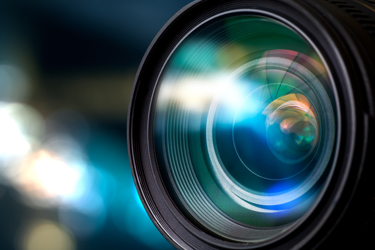NIST's Superconducting Camera 400 Times More Powerful Than Any Other Device Of Its Type

By John Oncea, Editor

Researchers at the National Institute of Standards and Technology (NIST) and their colleagues have built a superconducting camera containing 400,000 pixels — 400 times more than any other device of its type.
The National Institute of Standards and Technology (NIST) is a non-regulatory federal agency within the U.S. Department of Commerce and has spent more than a century helping to keep U.S. technology at the leading edge. Founded in 1901, NIST is one of the nation's oldest physical science laboratories, established by Congress to remove a major challenge to U.S. industrial competitiveness at the time — a second-rate measurement infrastructure that lagged behind the capabilities of the United Kingdom, Germany, and other economic rivals.
From the smart electric power grid and electronic health records to atomic clocks, advanced nanomaterials, and computer chips, innumerable products and services rely in some way on technology, measurement, and standards provided by NIST. As such, NIST’s mission is to promote innovation and industrial competitiveness by advancing measurement science, standards, and technology in ways that enhance economic security and improve the quality of life.
Well, they now have the highest-resolution single-photon superconducting camera to help fulfill that mission.
“Superconducting cameras allow scientists to capture very weak light signals, whether from distant objects in space or parts of the human brain,” writes NIST. “Having more pixels could open up many new applications in science and biomedical research.” And boy oh boy does this camera have more pixels, 400,000 of them to be exact. That’s 400 times more than any other device of its type.
Mo’ Pixels, Mo’ Advancements
NIST’s superconducting camera “is so sensitive it can detect single photons,” Universe Today writes. “It comprises a grid of superconducting wires with no resistance until a photon strikes one or more wires. This shuts down the superconductivity in the grid, sending a signal. By combining the locations and intensities of the signals, the camera generates an image.”
The camera’s architecture is scalable, meaning it is only setting the stage for even larger-format superconducting cameras that could make detections across a wide range of the electromagnetic spectrum says the NIST researchers responsible for building it. An advancement such as this “would be ideal for astronomical ventures such as imaging faint galaxies or extrasolar planets, as well as biomedical research using near-infrared light to peer into human tissue,” writes Universe Today.
“The NIST camera is made up of grids of ultrathin electrical wires, cooled to near absolute zero, in which current moves with no resistance until a wire is struck by a photon,” NIST writes. “In these superconducting-nanowire cameras, the energy imparted by even a single photon can be detected because it shuts down the superconductivity at a particular location (pixel) on the grid. Combining all the locations and intensities of all the photons makes up an image.”
Researchers Adam McCaughan and Bakhrom Oripov along with their collaborators from NASA’s Jet Propulsion Laboratory in Pasadena, California, and the University of Colorado Boulder, have successfully tackled a major obstacle. They did so by constructing wires that form multiple rows and columns, just like in a tic-tac-toe game. Each intersection point of the wires represents a pixel. They then combined the signals from many pixels onto just a few room-temperature readout nanowires.
NIST adds, “That arrangement enabled the team to measure the signals coming from an entire row or column of pixels at a time rather than recording data from each pixel, drastically reducing the number of readout wires. To do so, the researchers placed a superconducting readout wire parallel to but not touching the rows of pixels, and another wire parallel to but not touching the columns.”
Let's focus on the superconducting readout wire that runs parallel to the rows. Whenever a photon hits a pixel, the current is diverted to a resistive heating element, which heats a small portion of the readout wire, creating a hotspot. This hotspot generates two voltage pulses that travel in opposite directions along the readout wire and are detected at either end. By measuring the time difference between the arrival of these pulses at the detectors, we can determine the column in which the pixel is located. Similarly, another superconducting readout wire runs parallel to the columns and performs a similar function. The detectors are incredibly precise and can detect differences in signal arrival time as short as 50 trillionths of a second. Additionally, they can count up to 100,000 photons per second that hit the grid.
“Once the team adopted the new readout architecture, Oripov made rapid progress in increasing the number of pixels,” writes NIST. “Over a matter of weeks, the number jumped from 20,000 to 400,000 pixels. The readout technology can easily be scaled up for even larger cameras, said McCaughan, and a superconducting single-photon camera with tens or hundreds of millions of pixels could soon be available.”
NIST plans to improve the sensitivity of the prototype camera so that it can capture virtually every incoming photon, enabling the camera to tackle such low-light endeavors as imaging faint galaxies or planets that lie beyond the solar system, measuring light in photon-based quantum computers, and contributing to biomedical studies that use near-infrared light to peer into human tissue.
What The Future Holds
The team has planned to enhance the sensitivity of the prototype camera over the next year. This will enable the camera to capture nearly all of the incoming photons and perform low-light tasks such as imaging dim galaxies or planets beyond the solar system, measuring light in photon-based quantum computers, and contributing to biomedical studies that utilize near-infrared light to observe human tissue.
